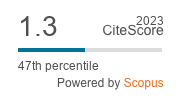Towards the Goals of the Europe 2020 Strategy: Convergence or Divergence of the European Union Countries?
DOI:
https://doi.org/10.2478/cer-2018-0004Keywords:
Europe 2020 Strategy, cluster analysis, European UnionAbstract
The aim of this article is to investigate the similarities between the EU countries in terms of achieving the Europe 2020 Strategy goals. Due to the latest data availability, the analysis is based on the year 2014. The study uses grouping methods, including the k-means algorithm. The results indicate the existence of a division between the “old” and “new” European Union Member States. However, as is shown, some of the Strategy’s targets have already been achieved and some indicators have been nearly achieved, whereas among others, such as implementation of the headline indicator for investment in the R&D sector as a % of GDP is uncertain. The average performance of headline indicators for the EU–15 and EU–13 countries seems to be similar and exhibits the same trend of changes.Downloads
References
Directive 2012/27/EU of the European Parliament and of the Council of 25 October 2012 on energy efficiency, amending Directives 2009/125/EC and 2010/30/EU and repealing Directives 2004/8/EC and 2006/32/EC, Official Journal of the European Union, L 315/1.
Google Scholar
Domański Cz. (ed.), Białek J., Bolonek-Lasoń K., Mikulec A. (2011), Nieklasyczne metody oceny efektywności i ryzyka. Otwarte fundusze emerytalne. PWE, Warszawa.
Google Scholar
Dziechciarz J. (ed.) (2003), Ekonometria. Metody, przykłady, zdania. Wydawnictwo Akademii Ekonomicznej im. Oskara Langego we Wrocławiu, Wrocław.
Google Scholar
European Commission (2010), EUROPE 2020. A Strategy for Smart, Sustainable and Inclusive Growth, Communication from the Commission, Brussels, 3.3.2010.
Google Scholar
European Commission (2010b), Lisbon Strategy Evaluation Document. SEC (2010) 114 final. Brussels. 2 February 2010.
Google Scholar
European Commssion (2012), The European Union Explained: Europe 2020: Europe’s Growth Strategy, European Commission, Belgium.
Google Scholar
European Council (2000), Lisbon European Council 23 and 24 March 2000 Presidency Conclusions.
Google Scholar
European Council (2008), Presidency Conclusions. 7652/1/08 REV 1. Brussels. 13–14 March 2008.
Google Scholar
European Council (2010c), Council of the European Union. Council Conclusions on Europe 2020, 7586/2010, Brussels, 16 March 2010.
Google Scholar
Eurostat (2016), Smarter, Greener, More Inclusive? – Indicators to Support the Europe 2020 strategy, Eurostat.
Google Scholar
Milligan G.W., Cooper M.C. (1985), An Examination of Procedures for Determining the Number of Clusters in a Data Set, ‘Psychometrika’, Volume 50, Issue 2, pp. 159–179 doi: 10.1007/BF02294245
Google Scholar
Mojena, R. (1977), Hierarchical Grouping Methods and Stopping Rules; An Evaluation, ‘Computer Journal‘, No. 20, 359–363.
Google Scholar
Natali D. (2010), The Lisbon Strategy, Europe 2020 and the Crisis in Between [in:] E. Marlier, D. Natali (eds.), Europe 2020: Towards a More Social EU? P.I.E. Peter Lang, Brussels.
Google Scholar
Stanisz A. (2007), Przystępny kurs statystyki z zastosowaniem STATISTICA PL na przykładach z medycyny. Tom 3 – Analizy wielowymiarowe, StatSoft, Kraków.
Google Scholar
Ward J. H. (1963), Hierarchical Grouping to Optimize an Objective Function, ‘Journal of the American Statistical Association‘, 58, 236–244. doi: 10.1080/01621459.1963.10500845
Google Scholar
Downloads
Published
How to Cite
Issue
Section
License

This work is licensed under a Creative Commons Attribution-NonCommercial-NoDerivatives 4.0 International License.











